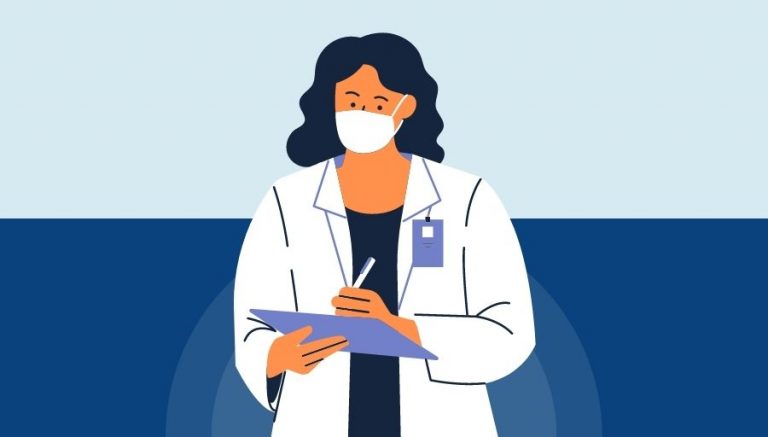How To Use CPT Code 43246
CPT 43246 is a code for esophagogastroduodenoscopy with directed placement of percutaneous gastrostomy tube. This article will cover the description, procedure, qualifying circumstances, when to use the code, documentation requirements, billing guidelines, historical information, similar codes, and examples of CPT 43246 procedures.
1. What is CPT 43246?
CPT 43246 is a medical code used to describe a specific type of endoscopic procedure involving the esophagus, stomach, and duodenum, with the directed placement of a percutaneous gastrostomy tube. This procedure is performed to provide a means of feeding or administering medications directly into the stomach for patients who are unable to swallow or require long-term nutritional support.
2. 43246 CPT code description
The official description of CPT code 43246 is: “Esophagogastroduodenoscopy, flexible, transoral; with directed placement of percutaneous gastrostomy tube.”
3. Procedure
The 43246 procedure involves the following steps:
- Administration of anesthesia to the patient.
- Insertion of a flexible endoscope through the mouth and down the esophagus, stomach, and duodenum.
- Inspection of the upper gastrointestinal (GI) tract using the endoscope.
- Guidance of percutaneous endoscopic gastrostomy (PEG) tube placement using the endoscope.
- Making a small incision in the external abdominal wall and inserting a hollow needle through the incision into the stomach cavity.
- Threading a thin wire through the needle.
- Using a snare attached to the endoscope to grasp the wire and pull it from the stomach, through the esophagus, and out of the mouth.
- Attaching a gastrostomy tube to the wire emerging from the mouth.
- Pulling the wire out through the abdominal wall, drawing the attached gastrostomy tube down the esophagus and through the hole created in the stomach.
- Securing the gastrostomy tube at the site of the abdominal puncture for secure feeding.
4. Qualifying circumstances
Patients who are eligible to receive CPT code 43246 services include those who:
- Have difficulty swallowing or are unable to swallow due to a medical condition or injury.
- Require long-term nutritional support and cannot maintain adequate nutrition through oral intake alone.
- Need a means of administering medications directly into the stomach.
- Have a medical condition or injury that necessitates the use of a gastrostomy tube for feeding or medication administration.
5. When to use CPT code 43246
It is appropriate to bill the 43246 CPT code when a provider performs an esophagogastroduodenoscopy with directed placement of a percutaneous gastrostomy tube for a patient who meets the qualifying circumstances listed above. The procedure must be medically necessary and supported by appropriate documentation.
6. Documentation requirements
To support a claim for CPT 43246, the following information should be documented:
- Patient’s medical history and physical examination findings.
- Diagnosis or medical condition necessitating the procedure.
- Indications for the procedure, such as difficulty swallowing, need for long-term nutritional support, or need for medication administration via gastrostomy tube.
- Details of the procedure, including anesthesia administration, endoscope insertion, and gastrostomy tube placement.
- Post-procedure care instructions and follow-up plan.
7. Billing guidelines
When billing for CPT code 43246, it is important to follow the appropriate guidelines and rules. Some tips and codes that apply to CPT code 43246 include:
- Do not report CPT 43246 in conjunction with codes 43197, 43198, 43235, 44360, 44361, 44363, 44364, 44365, 44366, 44369, 44370, 44372, 44376, 44377, 44378, and 44379.
- For percutaneous insertion of a gastrostomy tube under fluoroscopic guidance, use code 49440.
- For percutaneous replacement of a gastrostomy tube without imaging or endoscopy, see codes 43762 and 43763.
8. Historical information
CPT 43246 was added to the Current Procedural Terminology system on January 1, 1990. The code was changed on January 1, 2014, with the previous descriptor being “Upper gastrointestinal endoscopy including esophagus, stomach, and either the duodenum and/or jejunum as appropriate; with directed placement of percutaneous gastrostomy tube.”
9. Similar codes to CPT 43246
Five similar codes to CPT 43246 and how they differentiate from CPT 43246 are:
- CPT 43235: This code is for an esophagogastroduodenoscopy without any additional procedures, such as gastrostomy tube placement.
- CPT 43237: This code involves an esophagogastroduodenoscopy with endoscopic ultrasound examination and includes the esophagus, stomach, and duodenum.
- CPT 43238: This code is for an esophagogastroduodenoscopy with endoscopic ultrasound-guided fine needle aspiration or biopsy.
- CPT 43239: This code is for an esophagogastroduodenoscopy with biopsy, single or multiple.
- CPT 43241: This code is for an esophagogastroduodenoscopy with transendoscopic tube or catheter placement into the duodenum or jejunum.
10. Examples
Here are 10 detailed examples of CPT code 43246 procedures:
- A patient with esophageal cancer who is unable to swallow and requires a gastrostomy tube for feeding.
- A patient with a neurological disorder affecting their ability to swallow, necessitating the placement of a gastrostomy tube for long-term nutritional support.
- A patient with a traumatic brain injury who is unable to swallow and needs a gastrostomy tube for medication administration.
- A patient with a severe gastrointestinal obstruction requiring the placement of a gastrostomy tube for decompression and feeding.
- A patient with a progressive neuromuscular disease who is unable to maintain adequate nutrition through oral intake alone and requires a gastrostomy tube for feeding.
- A patient with a history of aspiration pneumonia due to swallowing difficulties, requiring the placement of a gastrostomy tube for feeding and medication administration.
- A patient with a congenital anomaly affecting their ability to swallow, necessitating the placement of a gastrostomy tube for long-term nutritional support.
- A patient with a severe burn injury who is unable to swallow and requires a gastrostomy tube for feeding and medication administration.
- A patient with a chronic gastrointestinal disorder who is unable to maintain adequate nutrition through oral intake alone and requires a gastrostomy tube for feeding.
- A patient with a history of multiple strokes who is unable to swallow and needs a gastrostomy tube for medication administration and feeding.


